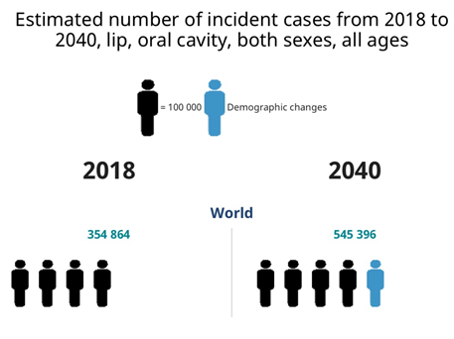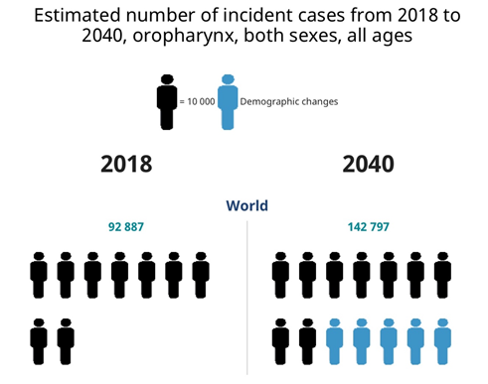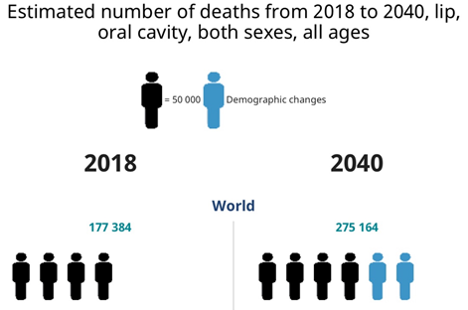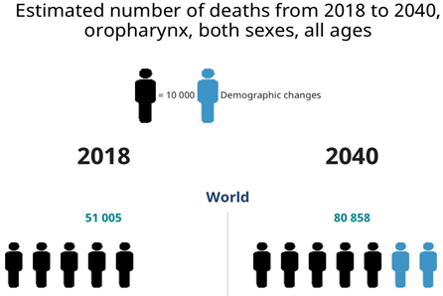Carica Papaya Leaf Extracts: A Novel Herbal Drug in Cancer Treatment
Abstract
With the continued increase in Cancer incidence and deaths, traditional clinical therapies like surgery, radiation, chemotherapy, immunosuppression alone are not enough to counteract cancer due to their cost and its associated side effects, thus emphasizing the need for a novel intervention plan. Hippocrates's (5th century BCE) quote "Let food be thy medicine, and let thy medicine be thy food" is well popular all over the world and thus food was chosen to enhance health and emotional wellbeing that caused the change in trend in the market for natural products that help in combating cancer. Cancer statistics showed that the consumption of diets rich in fresh fruits and vegetables is inversely associated with cancer incidence, which leads to study plant-based dietary antioxidants and its therapeutic role in cancer, which was underestimated in the past. This review is about the potential benefits of leaf extracts of Carica papaya in treating various cancers of the body; and its implication in the management of oral cancers.
Keywords
Cachexia, Head and neck cancer, oral cancer, Papaya leaf, Treatment, Herbal drug
Introduction
Amongst the 36 cancers known worldwide, Oral cancer stands 11th with a higher incidence in low and middle-income countries (LMIC's). India accounts for 20% of all the oral cancer cases and 25% for its associated deaths. Cancers of the oral cavity and oropharynx are the commonest among the head and neck cancers, with 90% of them being squamous cell carcinoma.
The main risk factor for oral cancer is the consumption of tobacco products, others being excessive alcohol use and dietary deficiencies. These habits account for more than 90% of oral cancers. It can be prevented by eliminating tobacco consumption, limiting alcohol use and increasing the intake of fruits and vegetables. A healthy diet rich in fruits and vegetables reduces the incidence of cancers in general by 40-50%. In High-income countries (HIC's), lack of fruits and vegetables may account for 15-20% of oral cancers, which is likely to be higher in LMICs. Projections indicate that the estimated number of incident cases of all cancers (a lip, oral cavity, salivary glands and oropharynx), both sexes, all ages will rise to more than 1.8 million from 2018 to 2040 as depicted in Figure 1 and Figure 2. The estimated deaths from 2018 to 2040 of all cancers, both sexes, all ages are 1.45 million, as depicted in Figure 3 and Figure 4 (Bray et al., 2018).




Materials and Methods
Due to associated side effects and high cost of treatment with the present treatment modalities, and stable increase in the incidence of new cancer cases and cancer mortality, the quest to search for cheaper and effective alternatives began leading to an increased interest in traditional herbal therapeutics using plants and their derivatives. Papaya leaves have been used for the treatment of malaria (Krishna, Paridhavi, & Patel, 2008), asthma (Gammulle, Ratnasooriya, Jayakody, Fernando, & Udagama, 2012), dengue fever (Ahmad et al., 2011; Subenthiran et al., 2013), vitamin B1 deficiency (Vien & Thuy, 2012), including cancer in many parts of the world (Heena & Sunil, 2019; Soubra, Nureddin, Omar, & Saleh, 2016). It also has shown anti-proliferative and cytotoxic activities against colorectal (Lohsoonthorn & Danvivat, 1995) and gall bladder cancers (Pandey & Shukla, 2002), prostate cancers (Shahar et al., 2011), cervical cancer (Siegel et al., 2010) and breast cancers (García-Solís, Yahia, Morales-Tlalpan, & Díaz-Muñoz, 2009; Zhang et al., 2009), while its extracts from seeds and the fruit show activity against MCF-7, HepG2, HL-60 cancer cells (breast, liver, leukemia, respectively) (Jayakumar & Kanthimathi, 2011).
Benefits of Carica Papaya
Papaya is remarkably known for its nutritional and therapeutic properties all throughout the world. Enzymes like Papain, Lycopene, Isothiocyanate, Vitamins, Minerals, Carotenoids, Flavonoids and Carbohydrates are present in the entire plant that is capable of feeding and nourishing the human body and immune system (Nakamura et al., 2007). Every part of the plant, including its leaves, fruits, seeds, bark, latex and its juice are used as a medicine, thus serving as a nutraceutical plant. Its leaves can also be consumed like spinach by steaming as used in some parts of Asia (Recio, Andujar, & Rios, 2012).
Immune defense mechanisms are activated by inflammatory conditions and under constant stimuli, chronic inflammation occurs, triggering the production and development of pro-inflammatory cytokines, transcription factors and oncogenes (Pan, Lai, & Ho, 2010). Immune inflammatory components: Immunoglobulins, T-cells and antioxidants are triggered by chronic inflammatory conditions (Gupta et al., 2012). Pathophysiology of cancer is dependent on Oxidative stress and inflammation mechanisms and that being the case, anti-inflammatory and immunomodulatory activities of plant extracts and their metabolites counteract them (Aravindaram & Yang, 2010; Yogiraj, Goyal, Chauhan, Goyal, & Vyas, 2014). The papaya leaf juice improves the antioxidant defense and is thus being recognized as a promising antioxidant.
There have been no human clinical trials and no in vivo cancer studies that have been conducted with extracts of Carica papaya so far in the literature. In a patent application, the high efficacy of extracts or brew of different parts of papaya in water has been demonstrated for the prevention, treatment or improvement of many types of cancers like lung, stomach, colon, pancreatic, liver, ovarian, neuroblastoma and other solid cancers, or lymphoma, leukemia and other hematological cancers. Numerous case studies have been reported as experimental examples, but data is limited. A case of a 47-year-old female with stomach cancer metastasized to the pancreas, drank approximately 750 mL of papaya leaf extract every day (Concentrated 750 mL of one dried papaya leaf boiled in a wooden vessel with 3L of water) for two periods of 90 days each and with a gap between the two periods. The pancreatic metastases disappeared and there was a drop in the tumor marker (carcinoembryonic antigen) to 2.3 from 49 and alpha-fetoprotein to 2.0 from 369, with no subsequent relapse. Long-term survival was observed after drinking papaya leaf extracts in 5 lung cancer patients, 3 stomach cancer patients, 3 breast cancer patients, 1 blood cancer patient, 1 liver cancer patient, and 1 pancreatic cancer patient, but these reported cases lack specific data (Yogiraj et al., 2014).
More surprisingly, the number of previous in vitro cancer studies for Carica papaya is also limited, with only several cell culture-based studies. Papaya preparation is used as a food supplement in treating conditions like thalassemia, cirrhosis, stroke, Alzheimer’s disease, Parkinson’s disease, diabetes and aging (Aruoma et al., 2010). The cytotoxic effect of C. papaya extract has been tested in various cancer cell lines in In Vitro studies (Nguyen, Shaw, Parat, & Hewavitharana, 2013).
Results and Discussion
Juice of Carica papaya leaves has been widely used in treating dengue and malaria with favorable results. Ingestion of papaya leaves is not needed to elicit its antiproliferative nature and hence they are widely tested for anticancer activity. They have been shown to exhibit an anticancer effect on the development of various cancer cell lines in vitro, like MCF-7, HepG2, HL-60 and solid tumor. Hence, further studies involving papaya leaf juice are warranted towards other cell lines, including oral squamous cell carcinoma. It is the presence of carotenoids, phenolics, and glucosinolates in papaya that exhibit these potential anticancer activities (Nguyen et al., 2013).
Many in vitro cell studies have discovered various bioactive compounds that modulate immune-inflammatory markers with papaya leaves and papaya seeds extracted using both water and ethanol or methanol.
Leaves and seeds have similar anti-oxidation activity profile even with differing phenolic and flavonoids content. Of all the papaya fractions, ethanolic extracts of papaya have greater anti-oxidation activity compared to aqueous extracts. This is attributed to the solubility of polyphenol's chemical structure (Hadadi et al., 2018). Similarly, leaf juice extracts have demonstrated stronger cytotoxic effect than brewed decoction as the bioactive compounds in papaya being temperature sensitive and can be heat-inactivated.
The enzyme papain in papaya is responsible for the anticancer activity. The fibrin in the cell wall of cancer cells is broken down and converted to the protein end products, i.e., amino acids. Papaya also contains oxygen and free radical reactive lycopene. Isothyocynate, too, is effective against various cancer cell lines. Thus, these compounds inhibit both the formation and development of cancer cells.
Conclusions
Three groups of bioactive compounds —phenolics, carotenoids, and glucosinolates — have attracted considerable interest in anticancer studies. Although the evidence is limited, there are indications that Carica papaya, with its abundant bioactive phytochemicals, can be used for treating various types of cancers. But human clinical trials are yet to be performed to confirm these findings. Even though survival was observed in patients with lung cancer, stomach cancer, breast cancer, pancreatic cancer, liver cancer and blood cancer after drinking papaya leaf extract; its anticancer effects in oral cancer has not been explored in detail. Cell culture and animal studies, as well as clinical trials, need to be conducted to determine doses for the consumption of different parts of papaya for oral cancer treatment, prevention and validation of the findings.